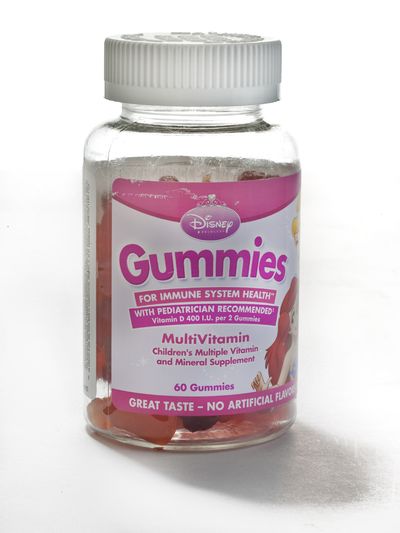Filling in the gaps on kids’ diets
If you use supplements, choose children’s brands and avoid large doses

When my son was 4, I tried giving him nutritional supplements to make up for his appalling diet. I mixed fish oil into his orange juice. I let him eat candy like gummy multivitamins. And I stirred a chocolate powder containing 31 fruit and vegetable extracts into his milk.
It eased my worries, but experts disagree on whether supplements do any good.
“An appropriate diet should cover all needs,” said Dr. Steven Daniels, a member of the American Academy of Pediatrics’ committee on nutrition. Parents of picky eaters may be concerned, he said, but the worry “is often misplaced because kids are growing and developing normally.”
But how many kids eat an “appropriate” diet? Dr. Kathi Kemper, who chairs the holistic and integrative medicine department at the Wake Forest University School of Medicine, often recommends a multivitamin or fish oil which contains omega-3 fatty acids because “people have a funny idea what a healthy diet actually is,” she said.
Surveys show that 99 percent of American children do not meet the recommended daily allowance for one or more essential nutrients, Kemper said.
If you do use supplements, look for children’s brands. Avoid large doses of anything; some nutrients, such as iron and vitamin A, can become toxic. Also note that supplements are not standardized and quality is not well-regulated by the Food and Drug Administration.
Here’s a guide to some of the more common supplements:
• Multivitamins haven’t been shown to offer a tremendous benefit and aren’t recommended by the AAP, but they generally don’t hurt as long as they’re made for children and less than 100 percent of the daily recommended value.
Gummy vitamins look and taste like candy. Try brushing your child’s teeth afterward to avoid cavities, said registered dietitian Judith Dodd, a food and nutrition adviser and spokeswoman for the International Food Information Council Foundation.
• Vitamin D: Studies have consistently shown that kids are not getting appropriate amounts of vitamin D in their diet, said the AAP’s Daniels. He added that it makes sense to take a multivitamin containing D.
But scientists aren’t sure how much vitamin D children actually need. The AAP recommends 400 international units a day to prevent and treat rickets, a bone-softening disease. Dietary sources are limited but many foods are fortified with D. It’s also made by the body when the skin absorbs the sun’s rays.
• Fish oil/omega-3s: Kemper recommends fish oil for children who don’t eat fish two or three times a week. Children who have specific issues, such as high triglycerides (a type of fat in the blood that can raise the risk of heart disease), may need fish oil, said Daniels, but he doesn’t recommend it for the general population.
• Liquid or powdered fruit and vegetable extracts: Whole fruits and vegetables are best. When choosing a supplement, much depends on how they are produced “because nutrients can be lost in the production process,” said registered dietitian Dee Sandquist, a spokeswoman for the American Dietetic Association. The biggest challenge, however, could be getting your picky eater to consume it in the first place.
• Calcium: Children over age 3 are usually deficient in calcium: Only 15 percent of girls and 22 percent of boys meet the recommended intake levels, according to the federal dietary guidelines report.
While a calcium supplement may be helpful, “milk has nine vitamins and minerals which provide an array of health benefits which a calcium supplement will not,” said Sandquist, who also recommends nondairy options (soy, almond, rice) or sources such as cereal and orange juice.
But remember, it adds up: “We know about 500 milligrams is the right amount for absorption,” Dodd said. Anything more is excreted.
• Iron: The AAP recommends 5 to 10 milligrams of iron for breast-fed babies. It should only be supplemented if needed for a medical condition, such as anemia, Sandquist said.